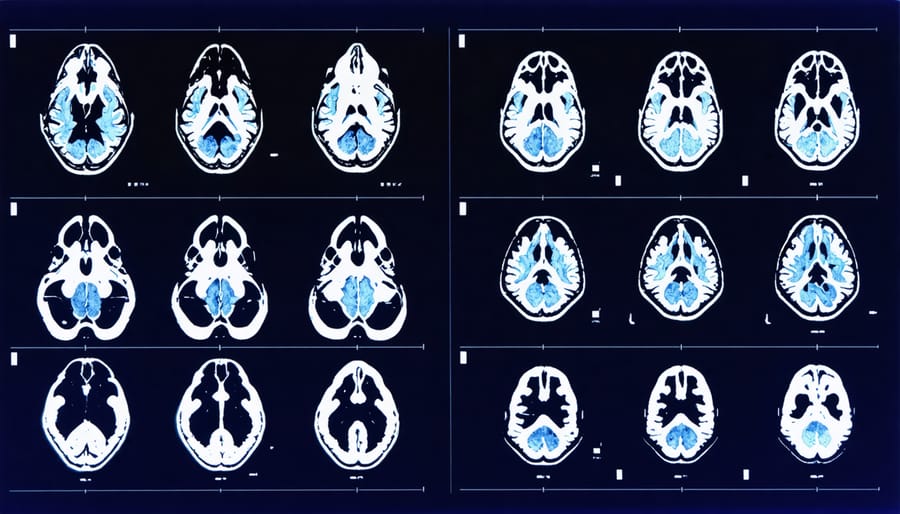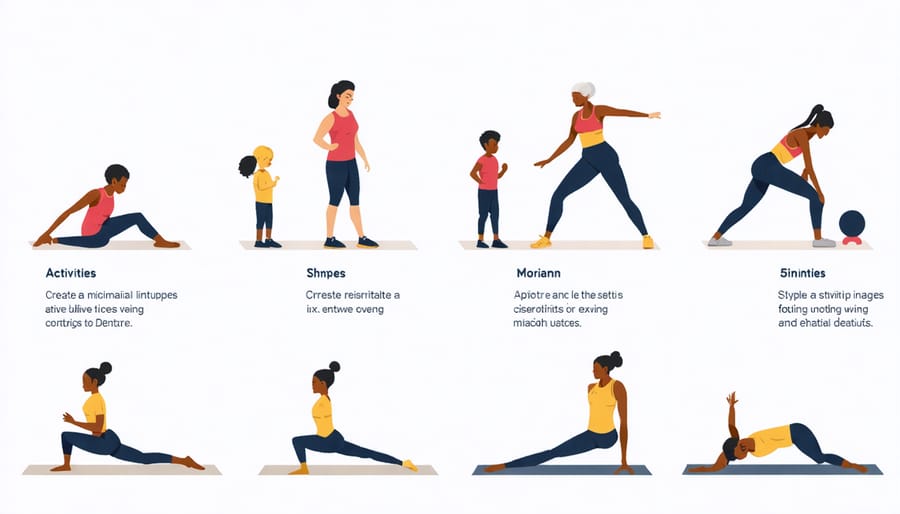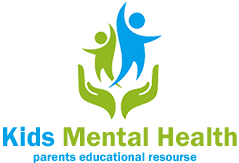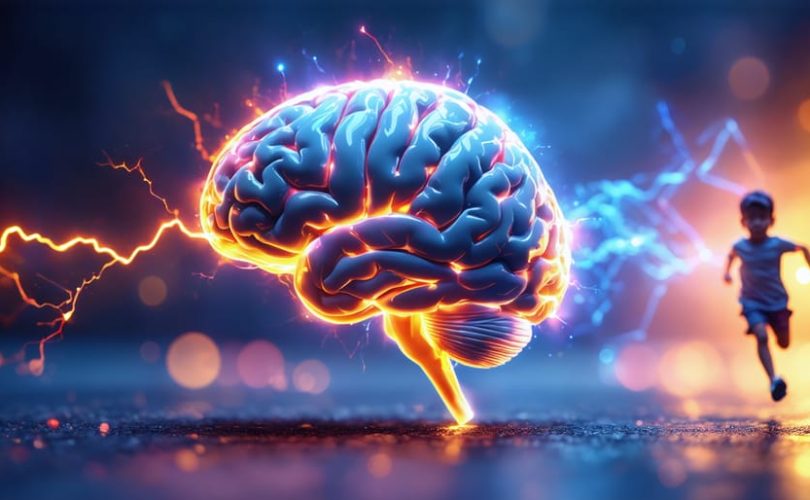Exercise doesn’t just strengthen our bodies – it fundamentally reshapes our brains, enhancing everything from memory and focus to emotional wellbeing and sleep quality. Recent neuroscience research reveals that physical activity triggers a cascade of powerful changes in the brain, releasing a cocktail of chemicals that promote new neural connections and protect existing brain cells. For parents and educators, this connection between movement and mental function offers an invaluable tool: just 30 minutes of daily exercise can boost children’s academic performance, reduce anxiety, and improve attention spans by up to 40%. Whether it’s a morning jog, an after-school sports practice, or simply active play during recess, movement provides our brains with the essential building blocks for learning, emotional regulation, and healthy development. Understanding this profound mind-body connection helps us appreciate exercise not just as a path to physical fitness, but as a fundamental contributor to cognitive growth and mental wellness across all ages.
How Physical Activity Reshapes Your Child’s Brain

Brain Chemistry Changes During Exercise
When children exercise, their brains undergo fascinating chemical changes that boost both their physical and mental well-being. During physical activity, the brain releases several important chemicals that act like natural mood boosters. Think of these as your child’s internal reward system, encouraging them to stay active and feel good.
One of the key players is endorphins, often called “feel-good hormones.” These natural chemicals help reduce stress and create that happy, peaceful feeling kids often have after playing outside. Another important chemical, serotonin, increases during exercise and helps regulate mood and sleep patterns.
Exercise also triggers the release of dopamine, which plays a crucial role in motivation and focus. This explains why children often feel more alert and ready to learn after physical activity. Dr. Sarah Johnson, a pediatric neurologist, notes that “just 20 minutes of exercise can create positive changes in a child’s brain chemistry that last for several hours.”
Additionally, physical activity boosts the production of BDNF (Brain-Derived Neurotrophic Factor), which helps create new brain cells and strengthen existing ones. This is particularly important for growing minds and can support better learning and memory.
Long-term Brain Benefits of Regular Exercise
Regular exercise doesn’t just benefit your child’s body – it actually reshapes their brain in remarkable ways. Research shows that when children engage in consistent physical activity, their brains develop more gray matter, particularly in areas responsible for memory, attention, and decision-making. Dr. Sarah Chen, a pediatric neurologist, explains, “It’s like building a stronger, more efficient highway system in the brain.”
These structural improvements translate into real-world benefits. Children who exercise regularly often show better academic performance, enhanced problem-solving abilities, and improved emotional regulation. They also experience better quality sleep, which strengthens the sleep and memory connection essential for learning and development.
One parent, Maria Rodriguez, shares, “Since starting our daily family walks and weekend soccer games, I’ve noticed my daughter is more focused during homework time and seems better equipped to handle daily challenges.” These improvements aren’t temporary – they build over time, creating a foundation for lifelong cognitive health and emotional well-being. The key is consistency rather than intensity, making it accessible for children of all ability levels.
The Exercise-Sleep Connection
Timing Exercise for Optimal Sleep
When it comes to maximizing the brain benefits of quality sleep, timing your child’s exercise is just as important as the activity itself. Research shows that morning and early afternoon exercise can help regulate your child’s natural sleep-wake cycle, making bedtime smoother and more predictable.
Dr. Sarah Thompson, a pediatric sleep specialist, recommends completing vigorous physical activities at least 3 hours before bedtime. “Active play and exercise raise body temperature and increase alertness,” she explains, “which can make it harder for children to wind down if done too close to bedtime.”
For optimal results, try scheduling active play and structured exercise between 9 AM and 4 PM. This timing allows your child’s body temperature and energy levels to naturally decrease as bedtime approaches. Morning exercise is particularly beneficial, as it helps establish a consistent daily rhythm and promotes better focus during school hours.
However, gentle movement like light stretching or calming yoga can be beneficial as part of a bedtime routine. These activities help release physical tension without overstimulating your child. Remember that every child is different, so observe how your child responds to exercise at different times and adjust accordingly. The goal is to find a schedule that promotes both joyful movement and restful sleep.

Activity Types That Promote Better Sleep
Research shows that certain types of physical activity can significantly improve sleep quality in children. Aerobic exercises, like swimming, cycling, or playing tag, are particularly effective as they increase heart rate and help tire the body naturally. Many parents have reported that their children sleep better on days when they engage in these activities for at least 30 minutes.
Outdoor activities are especially beneficial, as natural light exposure helps regulate the body’s internal clock. Activities like playground games, soccer, or simply running around in the backyard combine physical movement with sunlight exposure, creating an ideal combination for better sleep.
Yoga and gentle stretching exercises before bedtime can help children wind down and prepare for sleep. Dr. Sarah Chen, a pediatric sleep specialist, notes that “light stretching helps release physical tension and signals to the brain that it’s time to rest.”
Timing matters too. While morning and afternoon exercise generally promotes better sleep, vigorous activity too close to bedtime might make it harder for some children to fall asleep. The sweet spot is typically completing active play or exercise at least two hours before bedtime.
Dance, structured sports, and active play during recess all count as beneficial movement. The key is finding activities your child enjoys, as they’re more likely to participate consistently, leading to better sleep patterns over time.
Making Exercise Fun and Sleep-Friendly

Age-Appropriate Exercise Ideas
Exercise needs vary significantly across age groups, and finding the right activities can make all the difference in maintaining consistent physical activity. For young children (ages 3-6), focus on playful movement like dance parties, obstacle courses, and active games like tag or follow-the-leader. These activities naturally align with their energy levels while developing coordination and social skills.
School-age children (7-12) benefit from structured activities like team sports, swimming, or martial arts, combined with free play. At this age, incorporating activities that challenge both body and mind, such as rock climbing or dance classes, can be particularly beneficial for brain development.
Teenagers (13-17) often prefer more independent forms of exercise. Encourage activities like cycling, skateboarding, or gym workouts that align with their interests and provide opportunities for social interaction. High-intensity interval training (HIIT) can be especially effective for this age group, offering both physical benefits and stress relief.
Adults should aim for a mix of cardio and strength training. Activities like brisk walking, yoga, or weight training can be easily incorporated into busy schedules. For older adults (65+), focus on low-impact exercises like water aerobics, tai chi, or gentle stretching routines that maintain mobility and balance while protecting joints.
Remember to start slowly with any new exercise routine and gradually increase intensity. The best exercise is one that you enjoy and can maintain consistently, regardless of age.
Creating a Bedtime-Friendly Exercise Routine
Creating an exercise routine that supports quality sleep doesn’t have to be complicated. The key is finding the right balance between activity and timing. To maximize the mental health benefits of sleep, try scheduling moderate physical activities at least 3-4 hours before bedtime.
Start with gentle morning exercises like stretching or yoga to energize your child for the day ahead. After-school hours are perfect for more vigorous activities such as swimming, cycling, or playground games. These activities help release excess energy while promoting healthy physical development.
As evening approaches, transition to calmer activities. A family walk after dinner can be an excellent way to wind down while staying active. This also creates valuable bonding time and helps establish consistent bedtime routines.
Remember to keep exercise enjoyable rather than competitive close to bedtime. Simple activities like gentle stretching or bedtime yoga can signal to your child’s body that it’s time to prepare for rest. Dr. Sarah Chen, a pediatric sleep specialist, suggests, “Light movement before bed can help release tension without oversimulating the nervous system.”
Always observe your child’s response to different activities and timing, and adjust accordingly. What works for one child might not work for another, so flexibility is key in finding the right balance.
Exercise is truly a gift we can give to our children’s developing brains, offering benefits that extend far beyond physical fitness. As we’ve explored throughout this article, regular physical activity enhances memory, improves concentration, reduces stress, and promotes better sleep patterns in children. These aren’t just short-term gains – the positive effects of exercise create lasting changes in brain structure and function that can benefit our children throughout their lives.
Remember, implementing an exercise routine doesn’t need to be complicated or overwhelming. Start small with activities your child enjoys, whether it’s dancing in the living room, playing tag in the backyard, or joining a local sports team. The key is consistency and making movement a natural part of your family’s daily routine.
Dr. Sarah Thompson, a pediatric neurologist I recently spoke with, puts it beautifully: “Think of exercise as brain food. Just as we ensure our children eat nutritious meals, we need to feed their brains with regular physical activity.”
As parents and caregivers, we have the wonderful opportunity to model and encourage healthy exercise habits. When children see us prioritizing physical activity and experiencing joy through movement, they’re more likely to develop positive associations with exercise that can last a lifetime.
Let’s take action today. Start with just 15 minutes of physical activity and gradually build up to the recommended 60 minutes per day. Your child’s brain – and their future self – will thank you for it. Together, we can help our children build stronger, healthier brains through the simple yet powerful tool of exercise.







